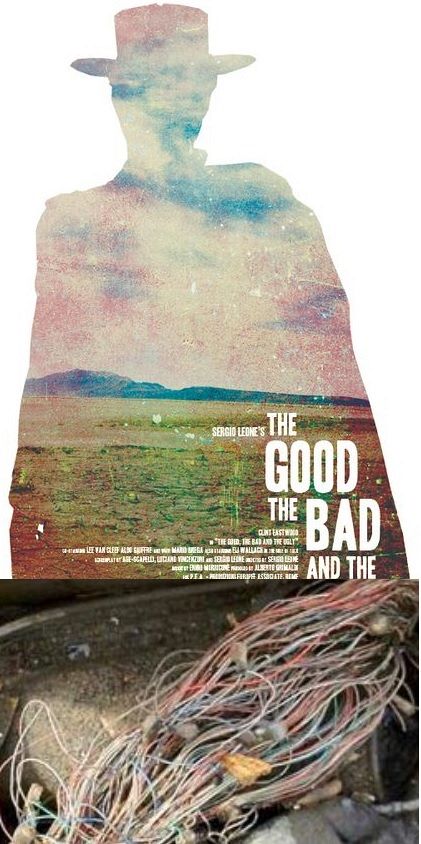Former senior Telstra project manager Dermot Daley provides a concise history of how Australia's digital future was repeatedly undermined.
THE PROBLEM with Australia’s broadband began when Paul Keating thought that economic rationalism (neoliberalism) might be a good idea and started eyeing-off public assets that he could sell. He sold Qantas and the Commonwealth Bank, but baulked when he encountered the public opposition to selling Telecom Australia.
However, Keating set the wheels in motion for the destabilisation of Australia’s public telecommunications industry when he brought in American Frank Blount and told him to corporatise the company. Frank changed Telecom into Telstra and cut lots of jobs by giving thousands of redundancy packages to workers over 60, and to young technically minded people who knew they could easily find other employment. Technologically handicapped, Telstra then came under the control of beancounters and bureaucrats.
Added to this, Keating further emasculated Telecom/Telstra by handing over Australia’s AUSSAT satellite networks to heavily subsidised new player Optus to coerce competition in the market.
Keating vowed and assured that Optus would forever remain an Australian-owned company.
In 1996, Paul Keating put negligible effort into getting re-elected and thence delivered Federal leadership to the unlikely, but avuncular, John Howard.
Howard did not – and in all likelihood probably still does not – understand telecommunications. He was satisfied to upgrade from rotary dial to push button telephone, but he did not appreciate that Australia was unique in the world for having a singular telecommunications network that spanned the whole continent, and that the same single network operated and managed frequencies across the whole spectrum. Howard did not comprehend, nor hold allegiance to, the universal service vision of the founding fathers of Australia’s Postmaster-General's department.
But some players wanted part of the action where they could double dip into the national economy and told John Howard that he needed to sell Telstra — and so he did.
Uncle John claimed that Governments had no business being involved in telecommunications, then he allowed the takeover of Australian carrier Optus by the Singaporean Government in 2001.
The smoke and mirrors used to sneak the sale of Telstra past the voters included the fiction that competition would bring about reduced costs. In reality, this was an era of technical changes that made equipment more compact and reliable, and much cheaper to operate.
Howard promised to use the proceeds of the first sale tranche to rehabilitate the Murray-Darling Basin – at that time suffering from toxic algae bloom due to poor land management – but all he conceded was some new fencing for a few squatters.
Pertinent to the current sad state of Australia’s NBN, is that by 2002 (again on Howard’s watch) a new transmission technology had become available for optic fibre. Dense wavelength division multiplexing (DWDM) provided for the simultaneous transmission of 80 frequencies in both directions in a single fibre. This meant that each and every optical fibre was suddenly made exponentially more efficient. All around the world, telcos radically slowed their fibre roll out. In Australia, Telstra’s arms length Network Design and Construction entity (NDC Ltd) put their fibre cable ploughs in mothballs and stood down the construction crews.
At that time, Telstra was inviting tenders to install a second optic fibre cable across Bass Strait and many global installers submitted aggressive bids for what was, essentially, a modest project. Australia’s only optic fibre manufacturing plant, at Botany in Sydney, was closed down.
How Australia missed a golden opportunity and squandered the mining boom: http://t.co/jVrQhHsliI pic.twitter.com/TpuE1PFiXg
— The New Daily (@TheNewDailyAu) January 15, 2015
Just as he failed to capitalise on Australia’s mineral resources boom, John Howard failed to see that this window would be the ideal time to expand Australia’s optic fibre network into the 21st Century and facilitate future stages to phase out the copper network.
But as Howard himself later admitted:
“The best thing I ever did was to give to up smoking."
Australia’s internet entrepreneurs slogged on, and the Telecommunications Industry Ombudsman had to deal with increasing numbers of complaints from a vexed public let down over appalling customer service, overcharging, poor coverage and unaccountable outages.
In 2007, the Rudd Government came along and saw that the copper-wire technology, that had been limping along since the days of "dots and dashes" telegraph, was a poor vehicle for the "ones and zeros" of digital transmission that worked much better along optical fibre. They proposed a new National Broadband Network as a future proofing project, to ensure that generations of Australians yet to commence kindergarten would have adequate tools when their turn came.
But the Government changed again in 2013, and the whole issue got muddy and very ugly. New PM Tony Abbott was blinded by hatred of the preceding Labour Government and set about dismantling their achievements out of sheer political spite. Abbott was also filled with vengeance towards his arch-rival Malcolm Turnbull, and made the former Party leader his Minister for Communications and then ordered him to choke back the NBN by insisting that archaic copper be used between the node and the premises — effectively asserting that cheap and nasty is all that Australia needs.
To anyone watching this travesty unfold, Abbott’s action was a palpable insult to all Australians, in that his malice towards the NBN would immediately impact on existing businesses and households who are entitled to reasonable speeds for this essential service.
Twenty years ago, no-one could foresee the way we work today, and no-one can state today how telecommunications will operate in 20 years time, except that it will be digital and will require optical fibre for practical transmission. (Digital radio transmission is also an option, but it can be limited by atmospheric conditions and distance.)
A forward looking project such as the NBN cannot be measured through a conventional "economic business case", as it will benefit emerging generations, who will develop it in ways that the ageing political class calling the shots will never comprehend.
The misadventures of Tony Abbott became offensive even to his colleagues, and the public cheered when Malcolm Turnbull seized leadership of the Liberal Party and the Coalition Government.
But unfortunately. Turnbull – who once owned some insight into the benefits of optical fibre over copper wire for digital transmission (and made a packet by investing early in OzEmail) – has steadfastly adhered to the destructive Abbott policy of rejecting a sensible NBN purely because it was initiated by the Labour Party.
Malcolm Turnbull has escalated the politicisation of this major infrastructure project, by condemning everything except the fundamental flaw in his own compromised design.
Turnbull now claims that the NBN may not make any money, but he fails to acknowledge that the NBN was not expected to make an immediate profit as it is for the long term good of the nation.
Turnbull cannot see that the NBN will, in all probability, become a very valuable asset for the Government in the same way that the uncosted and costly Snowy Mountains Hydro-Electric Scheme is now a valuable asset for his Government.
Malcolm Turnbull has lost all credibility because he has demonstrated that he is unable to function as the leader of the Government of Australia. He may have fulfilled his dream to be the Prime Minister of Australia, but he will also have to live with his legacy.
Turnbull renounced his former passion to see this country become a Republic; he has promoted the torture of humanitarian refugees; he has sacrificed Australian manufacturing and jobs, and wages growth at the whim of his political masters; he has failed to manage a simple parliamentary procedure to bring about marriage equality; he has reversed his former conviction that man-made climate change is a significant factor affecting life on this planet; and he has trashed our one off chance to have a world standard internet service.
In his fervour to appease non-elected ideologues in sinister conservative think tanks in order to gain and hold onto the title of PM, Malcolm Turnbull has sold his soul and, as a consequence, he must accept that the considerable expense of retrofitting his hybrid NBN to a functional 21st Century design will be forever on his head.
No amount of huffing and puffing, and posturing in the inimitable Turnbull manner, will negate this essential truth.
Dermot Daley was employed by Telecom / Telstra from 1989 to 2009, and was the Project Manager for the Bass Strait 2 Optical Fibre cable from Inverloch to Stanley in 2002.

This work is licensed under a Creative Commons Attribution-NonCommercial-NoDerivs 3.0 Australia License
Monthly Donation
Single Donation
'You Changed Horse In Mid-Stream': Kevin Rudd On Turnbull's #NBN #auspol https://t.co/VgfTc0c8HW #4corners #abc730 pic.twitter.com/7T2iV59hRY
— Lynetta G (@artbylynettag) October 24, 2017
Subscribe to IA. Moral fibre to your home.











